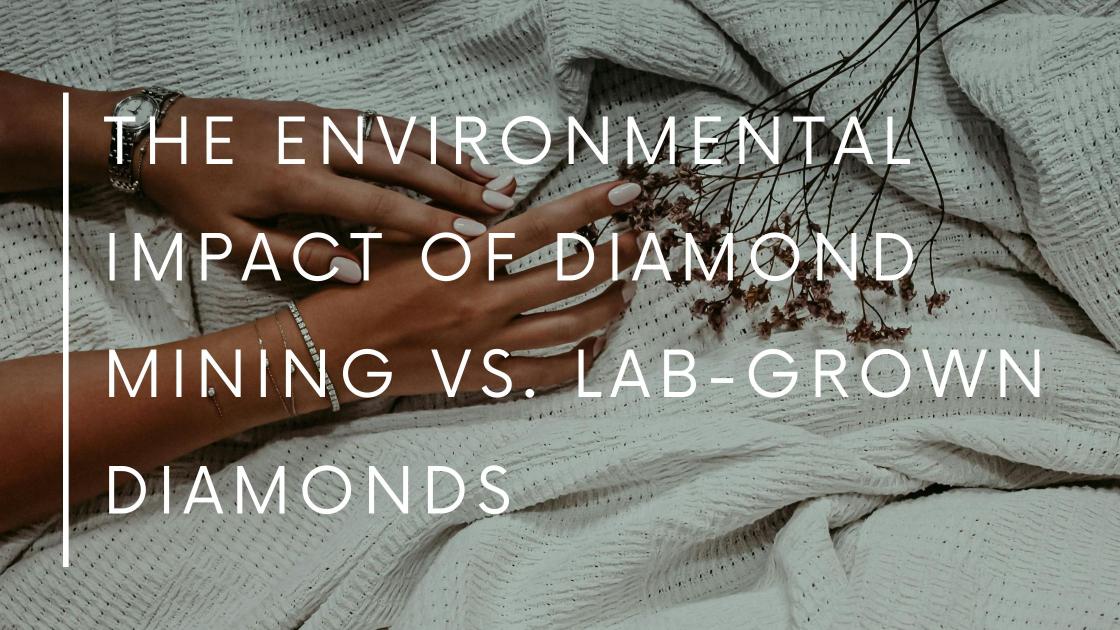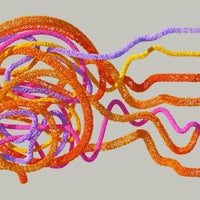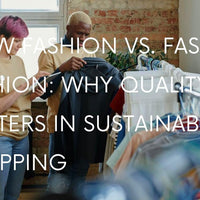The Environmental Impact of Diamond Mining vs. Lab-Grown Diamonds
Diamonds have always been a symbol of love, commitment, and luxury. However, the dazzling beauty of these gemstones often comes at a hidden cost: the environmental impact of diamond mining. Yes, the traditional diamond mining process typically raises concerns about its sustainable and socially responsible future. In recent years, lab-grown diamonds have emerged as a captivating alternative. But the real question is: Are lab-created diamonds sustainable? Are they good for the environment?
Let's delve deeper into the environmental impact of both options so that you can make the right choice.
What are Sustainable Diamonds?
Sustainable diamonds, also known as lab-grown or synthetic diamonds, are created in controlled laboratory environments. Unlike natural diamonds, which are formed over millions of years deep within the earth's crust, lab-grown diamonds are produced using advanced technological processes that mimic the natural diamond-growing process. Sure, there are unique factors to consider, such as challenges with moissanite in jewelry. However, lab-grown diamonds present an opportunity to address these concerns, offering a stunning and eco-conscious choice for jewelry enthusiasts.
This is why sustainable diamonds minimize their environmental footprint. One of the best examples is the Sydney Lab diamond engagement rings, which look great, are sustainable, and are available at affordable prices.
How Do Natural Diamonds Impact the Environment?
The mining of natural diamonds has several environmental implications. One of the most significant concerns is the disruption of ecosystems and habitats. Diamonds are formed under immense pressure and heat deep within the earth. The mining process utilizes heavy machinery and requires significant energy, often generated by fossil fuels. This causes greenhouse gas emissions, contributing to climate change.
Also, these diamond mines can consume vast amounts of water, depleting local resources and potentially contaminating water sources. Additionally, the processing and transportation of mined diamonds further add to the environmental burden.
How Are Lab-Grown Diamonds Made?
Today, lab-created diamond jewelry like lab diamond engagement rings is becoming popular. Lab-grown diamonds replicate the natural formation process under controlled conditions. They are created using two main methods: High Pressure-High Temperature (HPHT) and Chemical Vapor Deposition (CVD).
HPHT mimics the extreme pressure and heat found deep underground. In the CVD method, a diamond seed is placed in a chamber filled with carbon-rich gasses, which are then ionized to create a plasma. The carbon atoms from the plasma are deposited onto the seed, gradually building up a diamond crystal.
What Are the Sustainability Benefits of Choosing Lab-Grown Diamonds?
Lab-grown diamonds offer a significant advantage when it comes to environmental impact. Here's how:
●Lab creation eliminates the need for large-scale mining and its associated destruction of habitats.
●The process uses significantly less water compared to traditional mining. Estimates suggest lab-grown diamonds require a fraction of the water used for mined diamonds.
●Lab-grown diamonds are conflict-free, eliminating concerns about human rights abuses and violence associated with some diamond mining operations.
●They possess the same physical and chemical properties as mined diamonds, offering exceptional brilliance and durability.
●Additionally, lab-grown diamonds are often more affordable, making them a more accessible option for conscious consumers.
Final Thoughts
The environmental impact of diamond mining versus lab-grown diamonds is significant. While natural diamond mining can have detrimental effects on ecosystems and habitats, lab-grown diamonds offer a more sustainable alternative. By choosing lab-created diamonds, consumers can enjoy the beauty of diamonds without contributing to environmental degradation.








0 comments